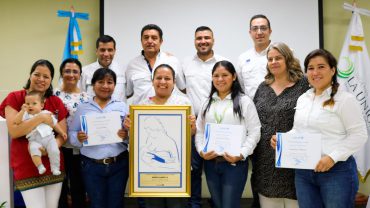Biography of Similiano García Cottone
The biography of Similiano García Cottone, a natural entrepreneur, can be found in my book “From Trapiche to Sugar Mill. The Adventure of a Family Business”. Ingenio La Unión, Fundación G&T Continental, printed in Guatemala, 2005, 301 pages. He was born in Guatemala City on June 5, 1932, and passed on Friday, January 20, 2023.
In 1950 the family purchased Los Tarros farm. Between 1951 and 2000, Similiano was fully devoted to the family business. Upon his father’s passing, in 1967, he took over the administrative and financial control of the business.
During its first decade, Los Tarros was dedicated to agriculture and cattle raising activities; it wasn’t until 1959 that sugar production began. It became the largest producer of panela at the time. In 1969, a second sugar mill was installed, La Unión, both in the municipality of Santa Lucía Cotzumalguapa, Escuintla, Guatemala. By reinvesting profit and zero bank loans, running solely on its own cash flow, the agricultural, industrial, and electricity generating capabilities of the farm continued to grow.
Under his leadership, during the 90’s, Corporate Social Responsibility programs began to be implemented. These included improvements to workers’ houses, both in the South Coast and for migrant workers from the Highlands, and the creation of modern industrial dining areas. In 1967, the school – now counting 300 students – was inaugurated. The school is located in Los Tarros farm. It has graduated around a thousand students, 400 boys and girls, who also hold a technical degree from INTECAP, and 600 adults. He also supported the creation of a botanical garden, in the form of an arboretum, showcasing over 100 different types of trees, for a total of 1000 trees native to the South Coast.
He also promoted the planting of one million trees as part of reforestation efforts. He supported environmental conservation programs, reducing water consumption in Ingenio La Unión, reaching an overall water consumption level less than a sugar mill in the desert of Northern Africa. Agricultural and industrial solid waste disposal into rivers was eliminated by 100%, a unique characteristic when compared to other sugar mills in Guatemala.
He faced important risks: the 1967 and 1974 eruptions of the Fuego volcano, that cast sand over rivers, creating serious difficulties for agriculture and industrial operations; recurring floods from nearby rivers, particularly Pantaleón and Coyolate; sugar falling prices; guerrilla attacks – including two combats within Los Tarros farm – during the internal armed conflict in Guatemala, in 1990. Later, in 1995, the hydroelectric plant was bombed and four persons were kidnapped.
Similiano worked to prepare family succession among the third generation, which became effective on July 14, 2000. An agreement among shareholders was signed and six external board members were appointed to create an Administrative Council. With this decision, he yielded 100% of his leadership – a particularly impactful decision – because he handed over the business to the Administrative Council. And he said: “I want to live to see how this goes”. And he did, with satisfaction, for the next 22 years.
His final entrepreneurship was towards the end of his life. He wanted to get ready to leap into eternity by receiving the holy sacraments and anointing of the sick.
Similiano García Cottone promoted two sugar mills, sugar cane, and electricity generation.

___________________________________________
The book: “From Trapiche to Sugar Mill. The Adventure of a Family Business. Ingenio La Unión” may be downloaded from the webpage www.launion.com.gt or from the following link:
https://bit.ly/DeTrapicheaIngenio

By José Santiago Molina Calderón
Section: Economy for all. Prensa Libre, January 25, 2023





